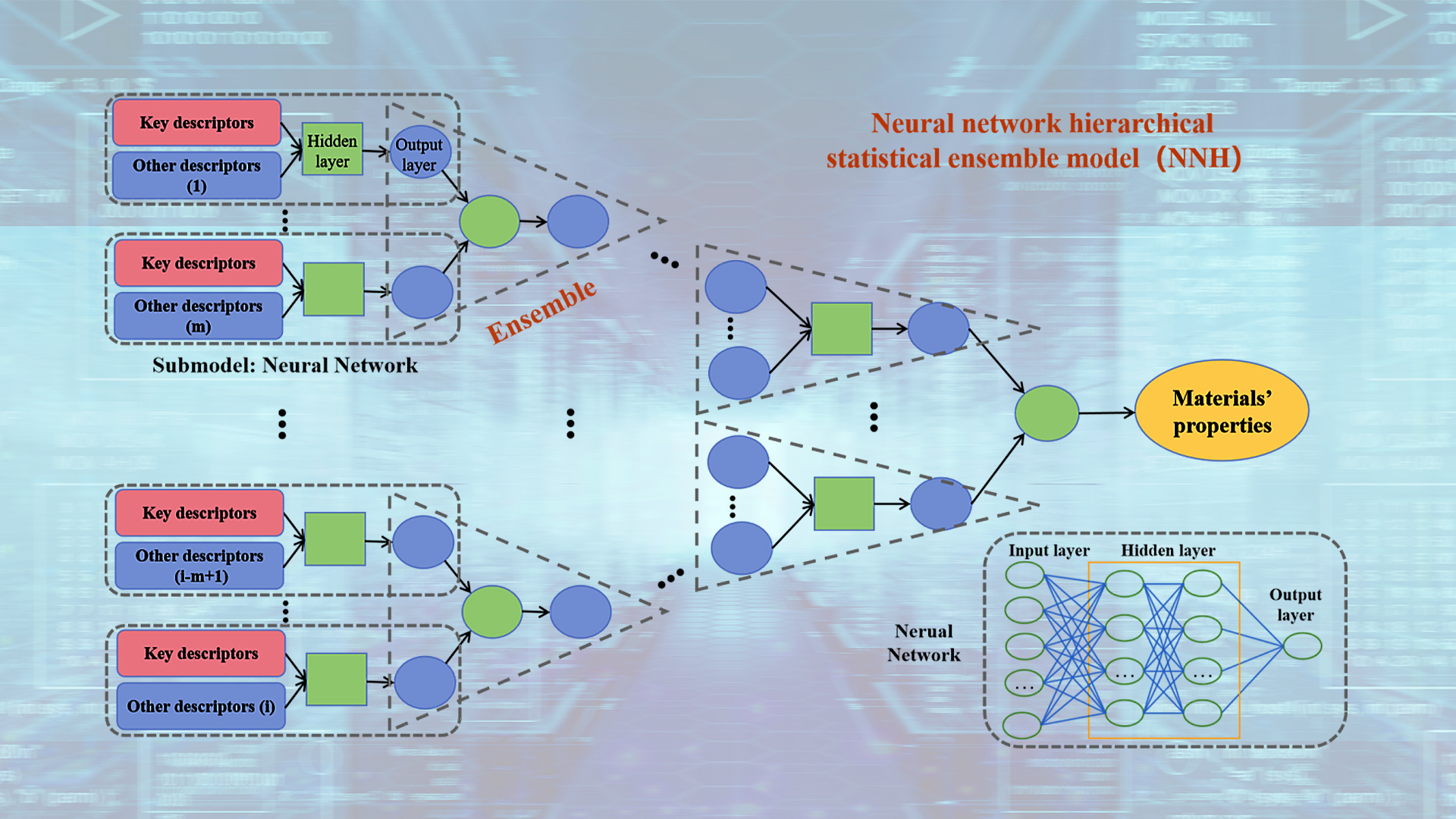Materials science explores the intricate relationships among composition, structure, processing parameters, and performance. Since material properties are governed by complex mechanisms, the field has seen growing interdisciplinary integration with physics and artificial intelligence (AI). In recent years, machine learning, particularly neural networks, has been increasingly applied in materials research. However, the success of these methods is heavily dependent on the quality of experimental data, the selection of descriptors, and the AI algorithms employed.

The research team led by Chair Professor X.-D. Xiang from the Department of Materials Science and Engineering at the Southern University of Science and Technology (SUSTech) has made significant progress in AI-driven predictions of superconducting critical transition temperatures (Tc) and oxygen evolution reaction (OER) electrocatalyst performance.
Their results have been published in the prestigious journals Frontiers of Physics and npj Computational Materials under the titles “Predicting superconducting temperatures with new hierarchical neural network AI model” and “Developing new electrocatalysts for oxygen evolution reaction via high throughput experiments and artificial intelligence”, respectively.
Traditional neural network algorithms often struggle with small datasets and high-dimensional descriptors, as limited data cannot effectively train the large number of hyper-parameters required. To address these challenges, X.-D. Xiang’s team developed an innovative neural network hierarchical (NNH) model. This approach combines genetic algorithms to optimize input dimensionality and identify key descriptors with the parallel training of millions of neural network sub-models, which are statistically integrated into the final ensemble. This method preserves unique correlations between descriptors and target properties, allowing effective training on small datasets while resolving the longstanding contradiction between limited data and high-dimensional descriptors.
The team first applied their NNH model to the relatively abundant dataset of superconducting Tc. After rigorous data cleaning to ensure high quality, they observed that using the 145 universal material elemental descriptors commonly cited in the literature, the NNH model improved the testing set R2 from 0.830 to 0.913. However, significant underfitting occurred for Tc values above 25 K. To address this issue, they expanded the number of universal material element descriptors to 909—more than five times the original set. Among the five most important descriptors identified by the genetic algorithm, three were newly constructed. Combined with the NNH model, the testing set R2 increased from 0.913 to 0.956, effectively eliminating the underfitting problem. Furthermore, the model successfully predicted Tc values for 45 high-entropy alloy superconductors outside the dataset, with deviations from experimental measurements below 6%. These results were published in the Frontiers of Physics.
The researchers also applied their method to the study of iron-based OER catalysts using small datasets. To ensure high data quality, high-throughput experimental data collected under consistent measurement conditions were used. The study identified ten key descriptors, all newly constructed from the expanded set of 909. Through iterative predictions and experimental validations, the test set R2 improved significantly from 0.7 to 0.98. They successfully predicted the complete Tafel slope-composition phase diagrams for Fe-Co-Ni, Fe-Co-Ce, and Fe-Co-La ternary systems, as well as the performance of 15 new OER catalysts, which showed excellent agreement with experimental results. These findings were published in npj Computational Materials.
Shaomeng Xu, a joint doctoral student at SUSTech and the Harbin Institute of Technology (HIT), is the first author of both papers. Chair Professor X.-D. Xiang is the corresponding author, while Dr. Chen Xu from the Academy for Advanced Interdisciplinary Studies and Dr. Mingyang Qin from the Department of Materials Science and Engineering served as co-corresponding authors. Key collaborators include Professor Kui Jin from the Institute of Physics at the Chinese Academy of Sciences, Dr. Zhuyang Chen, and Dr. Weixuan Li from SUSTech’s Department of Materials Science and Engineering.
Paper links:
Frontiers of Physics: https://doi.org/10.15302/frontphys.2025.014205
npj Computational Materials: https://www.nature.com/articles/s41524-024-01386-4
To read all stories about SUSTech science, subscribe to the monthly SUSTech Newsletter.
Proofread ByAdrian Cremin, Yingying XIA
Photo ByYan QIU